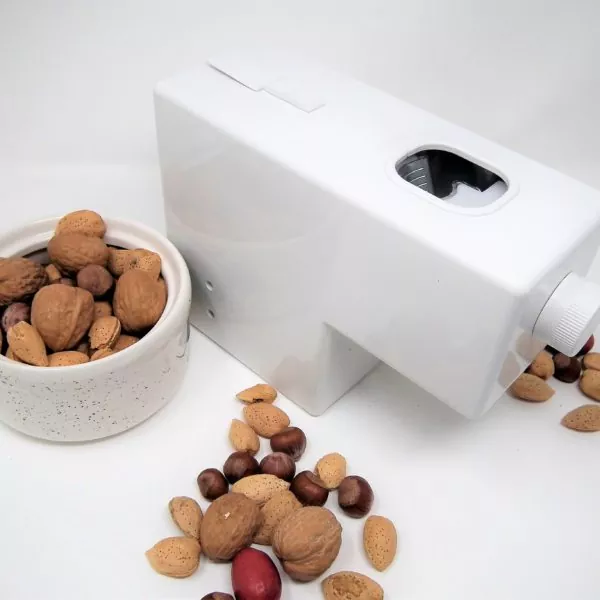The baguette is more than just bread; it’s a symbol of French culture, a culinary icon that has been cherished for centuries. Characterized by its crispy crust, soft interior, and signature elongated shape, the baguette has become a staple in households and bakeries around the world. Whether served alongside cheese, dipped in soup, or enjoyed with just butter, the baguette brings a taste of French tradition to any meal. But achieving that perfect balance of crunch and fluffiness can be an art form. In this guide, we’ll explore the history, essential ingredients, and the step-by-step process of creating the perfect baguette at home.
History of the Baguette
The baguette, as we know it today, has a fascinating history. While bread has been a part of French cuisine for centuries, the elongated, stick-like loaf only gained popularity in the early 20th century. It is believed that the baguette’s development was influenced by changes in French legislation, which limited the working hours of bakers and made it challenging to bake traditional round loaves. The longer, thinner baguette proved to be faster to prepare and bake, allowing bakers to meet demand and comply with the new laws.
Another theory is that the baguette’s design was inspired by the bread baked for soldiers during the Napoleonic wars. Easier to transport and share, this shape offered convenience during marches. Regardless of its precise origins, the baguette quickly became a beloved part of French culinary tradition, eventually achieving recognition by UNESCO as an intangible cultural heritage.
Essential Ingredients
To make an authentic baguette, you need just four basic ingredients:
- Flour: The type of flour you use is critical to the texture and flavor of your baguette. Opt for bread flour with a higher protein content (around 11-12%) to create the right amount of gluten.
- Water: Simple but vital, water affects the dough’s hydration, which influences the texture of the crumb. Using filtered or mineral water can make a subtle difference.
- Yeast: Yeast is responsible for the fermentation process that makes the bread rise. You can use active dry yeast or instant yeast, but fresh yeast is often preferred for its traditional flavor.
- Salt: Salt is essential for flavor but also plays a role in controlling the yeast’s activity and strengthening the dough.
These ingredients may seem simple, but how they’re combined and handled is what transforms them into the perfect baguette.
Step-by-Step Guide: Making the Perfect Baguette
Creating a baguette from scratch may seem intimidating, but with patience and practice, it can be a rewarding experience. Here’s a step-by-step guide:
- Mixing the Dough:
- Start by combining 500 grams of bread flour, 350 ml of water, 10 grams of salt, and 5 grams of yeast in a bowl.
- Mix the ingredients until a rough dough forms. Let it rest for about 30 minutes. This step, known as autolyse, allows the flour to hydrate, making the dough easier to handle.
- Kneading:
- Knead the dough on a lightly floured surface until it becomes smooth and elastic. This usually takes about 10 minutes.
- Alternatively, you can use a stand mixer with a dough hook on low speed for about 8 minutes.
- After kneading, place the dough in a lightly greased bowl, cover it with a damp cloth, and let it rise for about 1 to 1.5 hours, or until it has doubled in size.
- First Rise (Bulk Fermentation):
- Once the dough has risen, gently punch it down to release any excess air.
- Fold the dough by stretching and folding each side towards the center. This helps develop the gluten structure. Allow it to rest for another 30 minutes.
- Shaping the Dough:
- Divide the dough into 3 equal pieces. Each piece should weigh around 250 grams.
- Shape each piece into a rough rectangle, then roll it tightly to form a log. Gently roll the log on the work surface to elongate it into a classic baguette shape (about 15-18 inches long).
- Second Rise (Proofing):
- Place the shaped baguettes on a floured cloth (couche) or parchment paper, making sure there’s enough space between them to expand.
- Cover them lightly with a cloth and let them proof for about 45 minutes to 1 hour. During this time, preheat your oven to 475°F (245°C).
- Scoring and Baking:
- Using a sharp knife or a bread lame, make 3-4 diagonal slashes along the length of each baguette. This helps control the expansion of the dough during baking.
- Place the baguettes on a preheated baking stone or a baking tray lined with parchment paper. For a crispy crust, add steam to the oven by placing a pan of hot water at the bottom or spraying water into the oven just before closing the door.
- Bake for 20-25 minutes, or until the baguettes are golden brown and sound hollow when tapped.
- Cooling:
- Remove the baguettes from the oven and let them cool on a wire rack. This allows the crust to firm up and develop its signature crunch.
Common Mistakes to Avoid
Even experienced bakers encounter challenges when making baguettes. Here are some common mistakes to be mindful of:
- Overproofing the Dough: Allowing the dough to rise too much can result in a flat and dense baguette. Stick to the recommended times and watch the dough closely.
- Incorrect Dough Hydration: If the dough is too dry, the baguette will be dense. If it’s too wet, it can be challenging to shape. Use the correct water-to-flour ratio.
- Poor Shaping Technique: Proper shaping is key to achieving the right texture and appearance. Be gentle but firm when handling the dough.
- Not Enough Steam: Steam helps form a crispy crust. Don’t skip this step if you want a baguette that crackles when you bite into it.
Conclusion
Mastering the art of baguette-making requires practice, but the reward is a beautifully crafted loaf that tastes like it was baked in a French boulangerie. Each time you bake, you’ll learn something new and improve your technique. So don’t be discouraged if your first attempts aren’t perfect. Instead, embrace the process, savor the aroma of freshly baked bread, and share your creations with family and friends. After all, there’s nothing quite like a warm, homemade baguette fresh out of the oven.
So, grab your ingredients, roll up your sleeves, and embark on the delightful journey of making the perfect baguette. Bon appétit!



